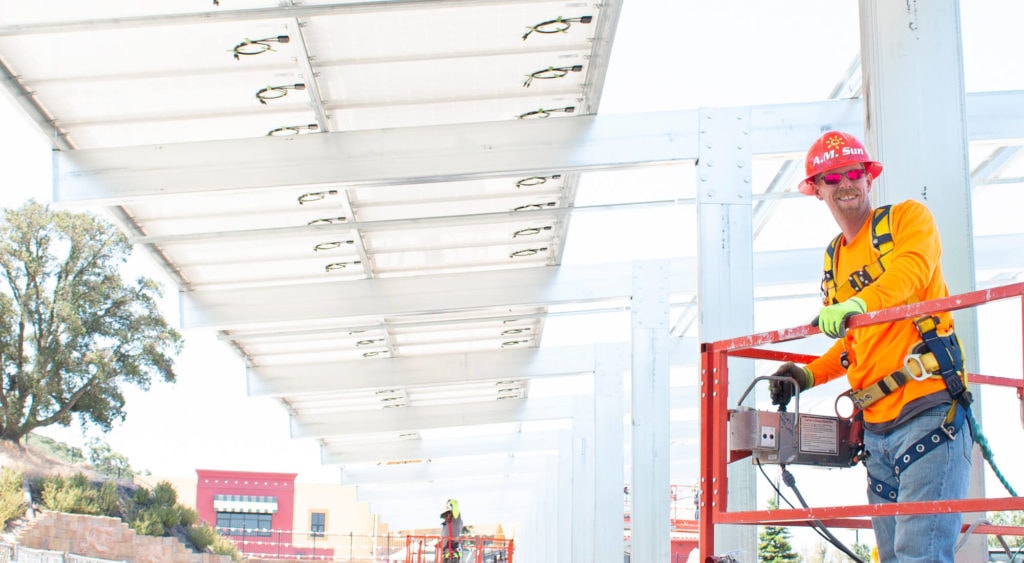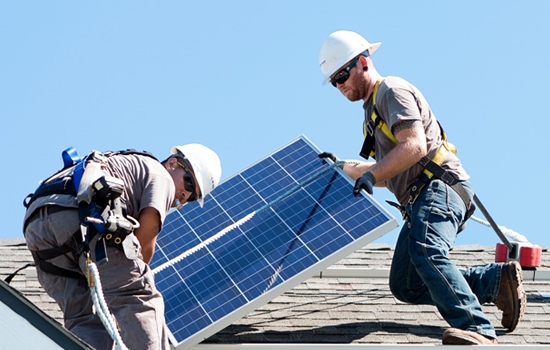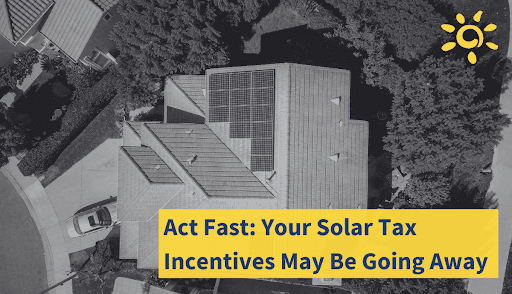With the housing market in the US at a 12 year high, home builders in California certainly have a lot to look forward to. Homebuyers are finally beginning to enjoy the benefits of the Federal Reserve’s easing of the monetary policy, which brought down mortgage rates, spiking up demand and improving buyer confidence to the highest it has been in the past one and a half years.
But, even as home builders are gearing up to cater to the uptick in demand, new legislation that comes into effect next year can provide them with an unexpected challenge. Called the California Solar Mandate 2020, the law will institute exciting changes in the residential market and will start a new chapter in the Golden state’s history.
The new reform has many home builders asking how this new legislation will affect them and what can they expect down the line. Here’s a quick take on what the solar mandate is and what challenges it will create for home builders and buyers.
What the California Solar Mandate 2020 Says and Means
On Dec 8, 2018, California state legislature unanimously passed the 2020 solar mandate. The code will apply to single and multi-family buildings, including apartment complexes and condos. The move is part of a more significant solar initiative that plans to have at least 50% of the state’s electricity provided by clean sources by 2030 and 100% by 2045.
Billed as the 2019 Building Efficiency Standard, the new legislation implements the following:
- All new homes permitted in California post-Jan 1st 2020 must be equipped with a solar energy system and should be at least 53% more energy-efficient than those built as per the 2016 code.
- The solar power systems must offset 100% of the home’s electricity usage. However, other energy sources like gas can still be used depending on when they were permitted.
- The size of the solar power system can be reduced by employing efficiency increasing measures such as better house design, green materials, and battery storage systems.

Preparing a Home for Solar Power
At first glance, strapping some solar panels onto a roof seems like small potatoes compared to building the house. But, a solar panel installation is far more complicated than it may appear.
For starters, code changes will render some of the most popular inverter options obsolete. The updated 2017 NEC code now requires module-level rapid shutdown inverters instead of the array level rapid shutdown that was mandated by the 2014 ruleset. The new code that went into effect January 2019 states that all conductors within an array’s one-foot boundary should be reduced to 80V or less within 30 seconds.
Correct sizing a home’s energy requirements is also where many solar installers go wrong. Many times, installers will size the energy requirements much lower than what a home is going to be using. A solar energy installer can more accurately determine how much solar is needed based on the appliances, the number of people living in the home, and other factors from their years of experience. If a home’s energy usage is not correctly calculated then the homeowner can end up with an electric bill they didn’t expect.
Designing a roof for solar panel installation will require significant planning upfront, too. The azimuth of the roof should ideally be such that its most significant portion of the roof receives maximum sunlight. In the case of pitched roofs, the degree of the pitch will be crucial to the amount of solar power the panels will be able to harness. For instance, in Central California, a pitch angle of 34 degrees will be ideal for solar panels.
While home builders routinely factor in weight affected by wind and snow on roofs, they will also need to reinforce the roof so that it can handle the weight of the solar panels. Solar panels add up to 4 pounds per square foot and up to 45 pounds per square foot at attachment points. Tilted systems can increase wind loads significantly.
There are also mechanical and electrical considerations to be made. Wall space will need to be allotted next to the building’s main electrical panel for the inverter unless microinverters are installed. Enough room will also need to be allocated for the conduit running from the solar panels to the inverter and in the main service panel.
While installing solar panels is a challenge, there are several questions you need to ask before you can get to it. For instance, the area of installation needs to be free from shades of trees, buildings, and other objects. The orientation of the PV system should allow for maximum efficiency. If the property has enough land-space, you might even find that a ground installation may be a better idea.

Choosing A Solar Installer Partner
Just like you will hire subcontractors for roofing, drywall, and landscaping, having a dedicated solar power installation partner can help you to ease out that steep learning curve. An excellent solar energy installer will be able to:
- Connect the system to the grid. Each electric utility also has a power purchase agreement that can have specific liability clauses you will need to be familiar with before moving forward.
- Get permits and insurance. Each county and city has different permit requirements that your solar partner will need to be familiar with. The solar power system that is built needs to be as per the city and county’s code and should match the plans correctly as they are submitted. Indeed, getting the permit itself is sometimes just as tedious as the installation process!
- Get the best rates. As solar contractors buy large quantities of material and equipment, they can secure better prices from suppliers. Certain OEMs don’t even sell solar panels to anyone other than licensed contractors.
- Mount the solar energy system. Solar contractors will possess specialized tools that are required to mount solar power systems. They will also know which combination of solar panels and Balance of Systems (meter, inverter, wires, switches, and mounting systems) work best.
- Can offer you specific warranties. Most solar contractors will offer at least a 10-year warranty against the installation and 20-year warranty on the panels themselves. A.M. Sun Solar provides a 12-year workmanship warranty, for example. Often, manufacturers will be reluctant to honor their warranties if the system has been installed improperly.
We Can Help!
As the highest-rated solar installers on the Central Coast, we at A.M. Sun Solar know what it takes to put together a custom solar energy system that works and you can depend on. For nearly two decades, we have provided a fully integrated service to our clients that takes care of designing, permitting, and installing solar power systems affordably. Our 12-year workmanship warranty includes constant system monitoring that alerts us to any issues a solar installation might face so that we can get to work on fixing it immediately.
Interested in learning more on how to include solar power installation to your list of services offered? Give us a call at (805) 772-6786 or contact us today.


